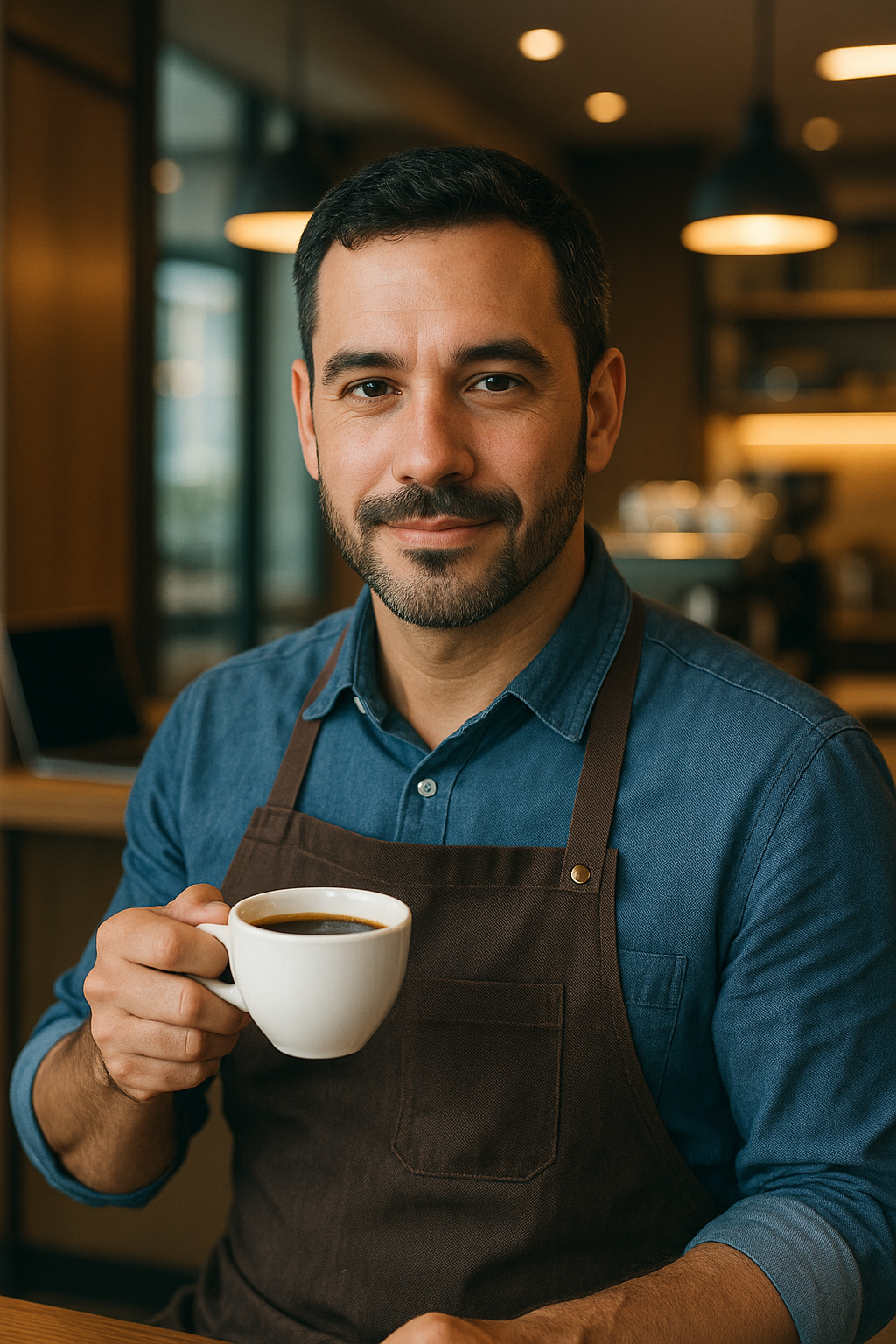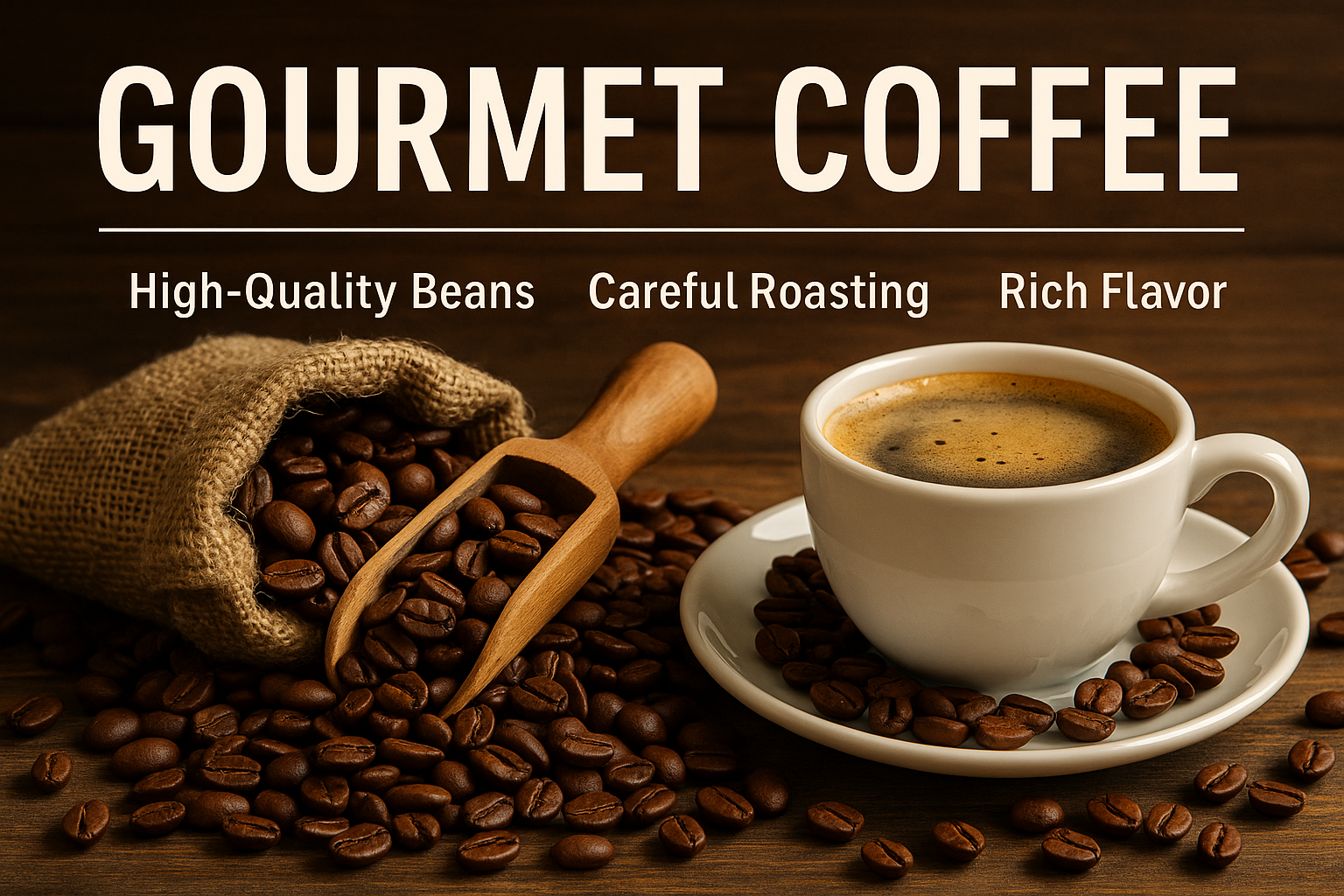The term gourmet coffee has become increasingly common in cafés, online shops, and even supermarket aisles. But what does it really mean? Is it just a marketing buzzword, or are there actual distinctions between gourmet coffee and regular coffee?
In this article, we’ll explore the true definition of gourmet coffee, what sets it apart, and why it’s worth understanding—especially if you’re passionate about your cup.
The True Definition of Gourmet Coffee
Unlike legal terms that are tightly regulated, “gourmet” in coffee is a somewhat flexible label. However, in the specialty coffee world, gourmet coffee typically refers to high-grade Arabica beans that have been grown, processed, and roasted with extra care. These beans are sourced from ideal climates, handled with precision, and judged by their flavor complexity, freshness, and sustainability.
A key indicator of gourmet coffee is its Specialty Coffee Association (SCA) score. Beans scoring 80 points or higher on a 100-point scale are classified as “specialty” or “gourmet” grade. These scores are determined based on:
- Flavor balance
- Aroma
- Acidity
- Body
- Aftertaste
- Lack of defects
Anything below 80 is considered commercial-grade, and most mass-market coffees fall below that line.
Arabica vs. Robusta: The Bean Basics
Most gourmet coffee is made from Arabica beans. These beans are generally grown at higher altitudes, are more delicate to cultivate, and have a smoother, more nuanced flavor compared to Robusta, which is stronger, more bitter, and higher in caffeine.
Here’s a quick breakdown:
| Feature | Arabica (Gourmet) | Robusta (Commercial) |
|---|---|---|
| Flavor | Sweet, fruity, floral | Bitter, earthy, nutty |
| Caffeine | Lower (~1.5%) | Higher (~2.7%) |
| Cultivation altitude | Higher altitudes | Lower altitudes |
| Cost to grow | Higher | Lower |
| Used in | Specialty/gourmet coffees | Instant/low-cost blends |
If you’ve ever tasted a truly flavorful cup of coffee without needing sugar or milk, you’ve likely experienced Arabica beans at their best.
How Gourmet Coffee Is Grown
Gourmet coffee starts with terroir—yes, the same term used in wine. It refers to the environment where the coffee is grown: soil composition, altitude, rainfall, and climate all impact the final flavor profile.
Some of the world’s best gourmet coffee-producing regions include:
- Ethiopia – Known for floral and citrusy notes
- Colombia – Balanced and nutty flavors
- Panama – Home of the ultra-premium Geisha coffee
- Kenya – Bright acidity and fruity sweetness
- Brazil – Chocolatey and full-bodied
Farmers who produce gourmet beans often use selective hand-picking, choosing only the ripest cherries to ensure even fermentation and roasting. Post-harvest processing—whether washed, natural, or honey-processed—also influences flavor clarity and intensity.
Roasting: The Art of Unlocking Flavors
Roasting is where the magic happens. While commercial coffee is often roasted in bulk, with the goal of masking inconsistencies, gourmet coffee is roasted in small batches and tailored to highlight specific tasting notes.
Light to medium roasts are common for gourmet coffee because they allow the bean’s origin characteristics to shine. A Colombian bean might express caramel and red apple notes, while an Ethiopian Yirgacheffe might burst with jasmine and blueberry.
A skilled roaster can adjust time, temperature, and airflow to unlock layers of complexity that you simply won’t get from a supermarket tin of pre-ground coffee.
Grinding and Brewing for Maximum Enjoyment
Even the best beans can taste mediocre if not brewed properly. That’s why most gourmet coffee is sold whole bean—to be freshly ground just before brewing.
Each brewing method interacts differently with gourmet beans:
- Pour-over (Hario V60, Chemex) – Highlights clarity and delicate notes.
- French press – Accentuates body and texture.
- Espresso – Concentrates flavor intensity.
- Cold brew – Softens acidity and enhances smoothness.
To preserve the nuanced flavors of gourmet coffee, you should use filtered water, a clean grinder, and the correct brew ratio (often 1:15 to 1:17, coffee to water by weight).
Gourmet Coffee vs. Regular Coffee: Is It Worth It?
You might be wondering if gourmet coffee is really worth the higher price tag. Here’s what sets it apart from regular coffee in practical terms:
| Feature | Gourmet Coffee | Regular Coffee |
|---|---|---|
| Flavor complexity | High | Low to moderate |
| Bean origin transparency | Usually single-origin | Often blended or unknown |
| Processing method | Carefully monitored | Mass processed |
| Freshness | Roasted to order | Often stored for months |
| Sustainability focus | Strong emphasis | Variable |
Gourmet coffee often supports fair trade, organic farming, and environmental preservation, so part of what you’re paying for is an ethical supply chain.
How to Identify True Gourmet Coffee
To make sure you’re buying real gourmet coffee and not falling for marketing hype, look for the following on the label:
- Single-origin sourcing (e.g., Guatemala Antigua, not just “Central America”)
- Roast date (ideally within 2–4 weeks)
- Varietal and processing info (e.g., Bourbon, washed process)
- SCA cupping score (80+ for specialty grade)
- Certifications (Rainforest Alliance, Fair Trade, Organic)
Also, avoid terms like “premium blend” or “gourmet-style” with no specifics. These are often red flags for low-quality coffee with a fancy label.
The Rise of Coffee Subscriptions and Micro-Roasters
Thanks to the third-wave coffee movement, many micro-roasters have popped up, offering direct-to-consumer delivery of gourmet beans. Subscription services like Trade Coffee, Mistobox, and Atlas Coffee Club tailor shipments based on your flavor preferences and even brewing method.
These companies often work directly with farms, shortening the supply chain and ensuring higher payouts for growers. As a consumer, you get access to freshly roasted, traceable, and truly gourmet beans at home.
Exploring the World Through Your Cup
One of the most exciting things about gourmet coffee is that it invites exploration. Each bag is like a passport to a different region of the world. You can compare a washed Ethiopian coffee with a natural-processed Brazilian, or a volcanic-grown Costa Rican with a honey-processed Panamanian Geisha.
You can learn to identify tasting notes like citrus, chocolate, spice, and even floral or wine-like aromas. Over time, your palate will evolve—and you’ll likely never go back to burnt, bitter mass-market coffee again.
Final Brew: More Than Just Coffee
Gourmet coffee isn’t just about taste. It’s about craftsmanship, sustainability, and connection. It links you to farmers on the other side of the globe, to roasters who treat their craft like art, and to communities who gather over each perfectly brewed cup.
Understanding what makes gourmet coffee different helps you become a more informed consumer—and a more satisfied drinker. So next time you’re choosing your beans, remember: behind every gourmet cup is a story worth savoring.

Marcelo Oliveira is a coffee enthusiast and content creator specializing in barista skills, brewing methods, equipment reviews, coffee-related health insights, and fascinating curiosities from the coffee world. With a deep passion for every step of the brewing process, he turns technical knowledge into accessible and engaging content for both beginners and seasoned coffee lovers. Marcelo’s goal is to help readers appreciate the full experience of coffee—from bean to cup.
